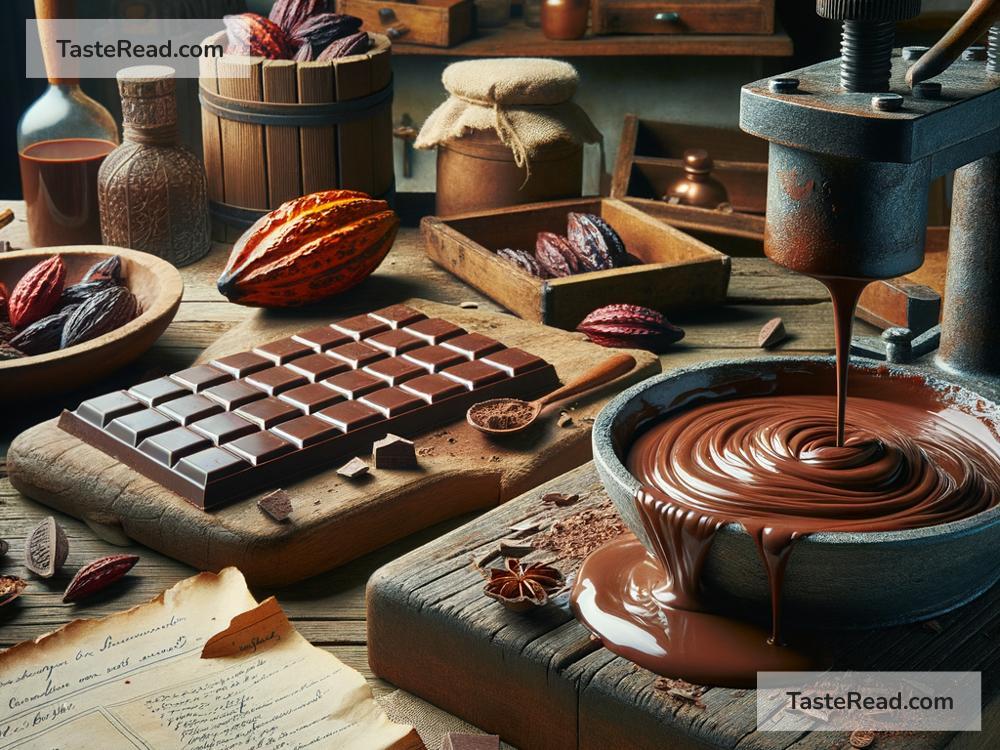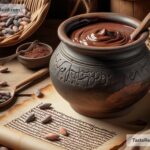The Origins of the First Chocolate Bar: A Journey Through Folklore
Chocolate is one of the world’s favorite treats today, but have you ever wondered about its humble beginnings? Did it always come in bars, or was it once a mysterious substance hidden in ancient rituals and legends? The story of the first chocolate bar is wrapped in myth, history, and a sprinkle of folklore.
Early Beginnings of Chocolate
Long before chocolate bars existed, cacao beans were important to ancient civilizations, especially the Olmecs, Mayans, and Aztecs in Central and South America. Over 3,000 years ago, cacao beans were considered sacred. They were used to make a bitter drink that was mixed with spices like chili and consumed during religious ceremonies. It wasn’t candy-like then; it was more like a strong, frothy tonic meant only for the gods and the elites.
In Aztec folklore, there’s a famous story about how humans first got cacao. According to one legend, Quetzalcoatl, the feathered serpent god, gave cacao to humans as a gift. He stole the precious cacao seeds from the heavens and brought them to Earth so the people could make the divine drink. Because cacao came from the gods, it was seen as a heavenly food, reserved for emperors and warriors.
The Journey of Cacao Across the World
The chocolate we know today began to evolve when European explorers came to the Americas in the late 1400s and 1500s. They were amazed by the cacao drink, even though it was much different from the sweet treats we’re used to today. Explorers like Hernán Cortés brought cacao beans back to Europe in the early 16th century.
In Europe, people slowly started experimenting with cacao. They added sugar, vanilla, and milk to the bitter drink to make it sweeter and more enjoyable. At first, chocolate was still a liquid, but it became extremely popular among royalty and wealthy families. By the 18th century, the Industrial Revolution brought changes to chocolate production. Machines were invented to grind and process cacao more efficiently. This led to new ideas about creating solid forms of chocolate.
Folklore of the First Chocolate Bar
The transition to chocolate bars wasn’t sudden, and folklore offers charming tales about how they first came to be. One story hints at an accidental discovery by a chocolatier whose spilled sweetness hardened into a sheet. The legend says that this confectioner was inspired to cut it into smaller pieces, ultimately inventing the first solid chocolate bar.
Another tale speaks of a hardworking inventor who spent nights locked away in his workshop, combining different ingredients with cacao to create something easier to carry and eat. According to this story, the first chocolate bar was a gift to workers who wanted sweet energy during their long hours. These imaginative folk tales highlight the idea that chocolate wasn’t just food—it was magic and ingenuity.
While these stories are fun and engaging, history gives us a clearer answer about the real origin of the chocolate bar. It was made possible by technical innovations and the vision of a few ambitious chocolate producers in the 19th century.
The First Recorded Chocolate Bar
The earliest record of a chocolate bar comes from the mid-1800s. In 1847, the British company J.S. Fry & Sons developed the first true solid chocolate bar. They combined cacao powder, sugar, and cacao butter to make a moldable mixture. This resulted in a portable piece of chocolate that could be eaten on the go. It was revolutionary at the time, and other confectioners quickly followed Fry’s lead.
In 1875, Swiss chocolatier Daniel Peter invented milk chocolate by adding condensed milk to the recipe, making chocolate even creamier and more irresistible. Peter worked closely with Henri Nestlé, whose company would later grow into one of the largest chocolate producers in the world.
By the late 19th century, chocolate bars were no longer just luxury items for the elites—they were becoming affordable for ordinary people. Thanks to improvements in production and transportation, chocolate bars started appearing in homes, markets, and shops everywhere.
Chocolate in Folklore Today
Even though we now know the science and history behind chocolate, the folklore lives on. Cacao is still tied to magic and mystery in many cultures. Some legends claim that eating chocolate can bring good luck or help you find love. Others believe that chocolate has healing properties, connecting it to the divine roots laid down by ancient civilizations.
Over the centuries, chocolate has evolved from a sacred drink to a universal treat. But it still carries stories of gods, inventors, and dreamers who played a role in its journey.
Conclusion
The first chocolate bar came from a mix of innovation and history, but the process of getting there was influenced by the magic and wonder surrounding cacao beans in folklore. From the sacred drink of the Mayans and Aztecs to the creation of a portable sweet treat, chocolate has found a way to delight people at every step of its journey.
Today, when we unwrap a chocolate bar, we don’t often think about its roots in myth or the hardworking creators who turned chocolate into the global phenomenon it is now. But in every bite of this sweet delicacy, we can taste a hint of its magical beginnings and appreciate the fascinating history behind it.


